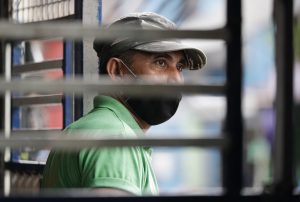Early evidence suggests the world’s leaders in fighting COVID-19 include countries like Taiwan, Vietnam, and South Korea, which effectively flattened the curve and managed to minimize the damage to their economies. The key ingredients to their success include agile test, trace, and treat systems to counter any flare ups; strong public-private partnerships in the health industry; effective application of technologies for information dissemination and contact tracing; and all this with less dependence on draconian lockdown measures. Some of these countries have also invested heavily in their respective health sectors, enabling them to rapidly realign and ramp up absorptive capacities should the need arise.
Meanwhile, in countries like the Philippines, social distancing and lockdown policies are not nuanced because of incomplete data, and health and social protection systems are still underdeveloped and not totally inclusive. Hence it is not possible to use a “scalpel” (i.e. nuanced social distancing, selective quarantine, and other health policy responses that allow for many economic activities to continue) and instead countries with weak systems turned to an “axe” (lockdown). Also, compared to a country like Vietnam, which was decisive from the start, the Philippines belatedly severed its link to the main source of the disease (China). So it seems the Philippines ended up having to resort to a stronger lockdown when compared to other countries.
Put differently, the economic cost of saving lives in the Philippines is high because it has weak systems and institutions, granting it little agility in its response options.
With these lessons in mind, countries cannot simply go “back to normal” because what had become “normal” was part of what exacerbated (and is still exacerbating) the crisis in the first place. Issues include insufficient and noninclusive healthcare and social protection, combined with a growing level of inequality that, in part, reflected itself in densely populated urban slums that are vulnerable to contagion, as well as easily impacted by quarantines and lockdowns. In the Philippines, the deep divides between the healthcare-haves and have-nots, and the technology-haves and have-nots (e.g. those with access online education and work-from-home vs “no work, no pay” daily wage earners) made the crisis trade-offs noted earlier even more acute. Moving forward, among the key areas for policy focus under the “new normal,” strengthening and building a more crisis-resilient and inclusive healthcare system is probably the most critical investment from both the medium-term and long-term perspectives.
Boosting the health system is consistent with immediate crisis response and recovery objectives to ensure that public and private hospitals are also able to recover from the challenges brought about by COVID-19, which not only include higher risks faced by health frontliners, but also the two-pronged pressure of higher costs combined with dramatically lower revenues. In the Philippines, there are early indications of strong financial stress faced by many hospitals, such that some of them have already resorted to budget cuts, lay-offs, and closure of some services.
In addition, the gradual easing of lockdown and quarantine, and the subsequent economic recovery period, should be underpinned by test, trace, and treat capabilities in the healthcare system in order to prevent a relapse, or a W-shaped recovery. This will require a variety of adjustments, including changes in behavior at the individual level (emphasizing personal discipline and responsibility such as wearing masks and getting tested and self-isolating if they develop symptoms), retooling by businesses to observe gradual easing of social distancing and quarantine rules, and strong partnerships across central and local governments as well as business, civil society, and local communities.
Furthermore, a strong healthcare system underpinning the recovery and providing a credible assurance of coverage for all citizens should they need it, and diminished relapse risk, will also be critical in backstopping the psychology of recovery. Simply put, a strong health system can help bring back stronger confidence in recovery — otherwise recovery is likely to be more timid and uncertain, if many consumers and investors stay in “survival mode” and continue to fear a relapse due in part to a lack of trust in crisis response capabilities.
COVID-19 exposed the weaknesses in healthcare and social protection systems — notably inequality in coverage and access — and this same inequality has been shown to exacerbate the social and economic costs of the crisis. Yet crises offer important windows for deep rethinking and system reform. Drawing on international good practices in COVID-19 response, the Philippines’ healthcare system can be further strengthened through important innovations and reforms. For instance, ICT systems and innovative apps for telemedicine could be used to share and manage information in collaboration with the central and local governments, and across public and private hospitals, testing centers, and other healthcare units.
Prior to a crisis, one could set up emergency coordination mechanisms to rapidly rearrange and realign the local health system to form “surge capabilities” anchored on strong public-private partnerships for crisis response. Policymakers could also pursue integrative health crisis planning and investments in both institutions- and skills- development to strengthen resilience against future health shocks. And perhaps most importantly, reforms and investments could help enhance affordable healthcare, minimizing out of pocket expenses notably for poor and low-income citizens and more effectively managing costs through inclusive social insurance and efficient public-private balance in healthcare provision.
Stronger and more inclusive systems for healthcare and social protection build upon and also reflect the level of social cohesion in countries. It is unsurprising that those same countries tend to have a deep well of social capital and public trust in crisis responses of the state, in turn making it much more effective in crisis response.
Ronald U. Mendoza is Dean, Ateneo de Manila University, School of Government. This article is based on a paper that can be accessed here.

































